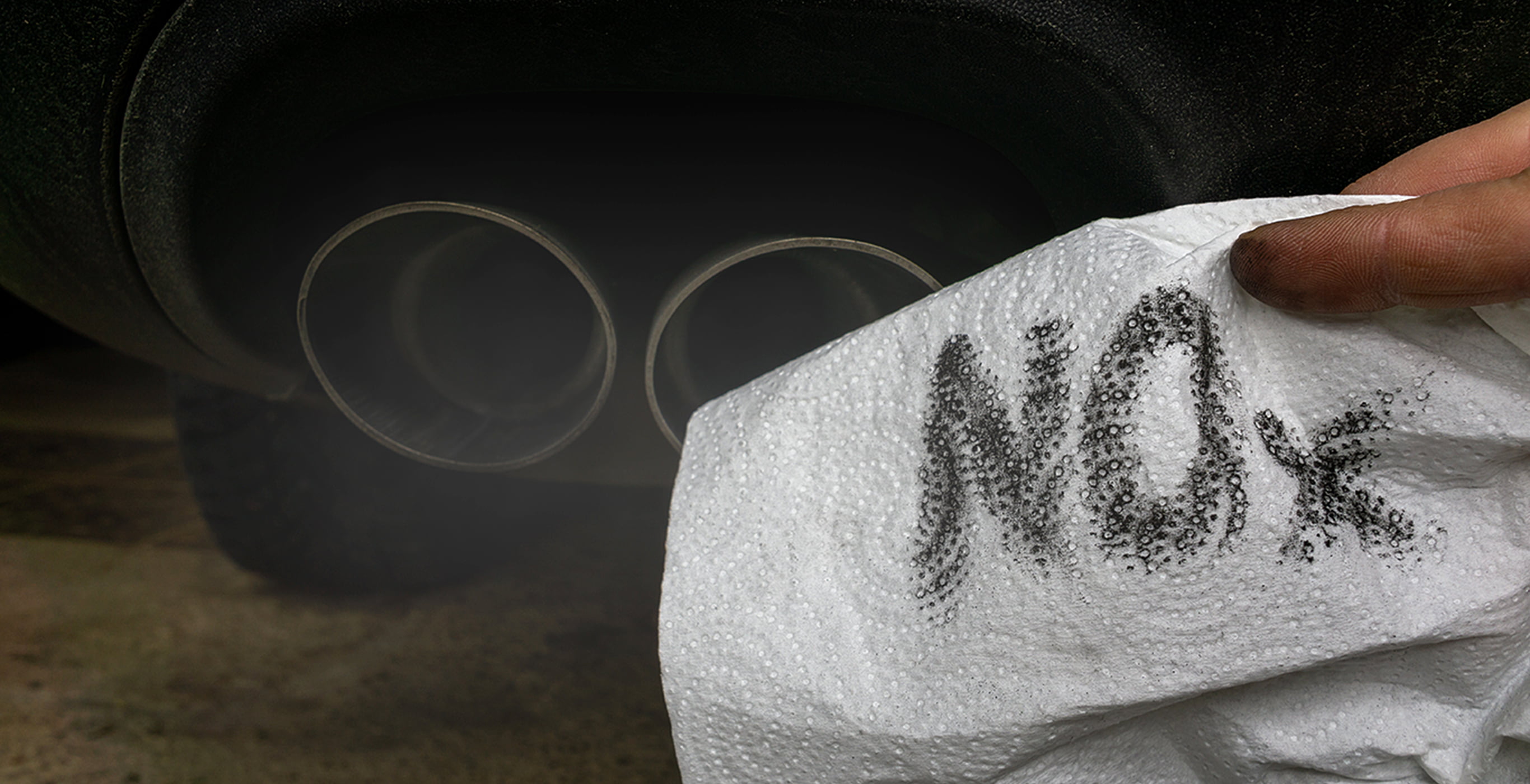- Home
- Products
- Gasoline engine catalysts
- NSR (NOx storage-reduction) catalysts
NSR (NOx storage-reduction) catalysts
Nitrogen oxide storage-reduction (NSR) catalysts, which can efficiently reduce nitrogen oxides (NOx) in lean combustion exhaust gas to nitrogen (N2), are used in gasoline lean-burn engines and diesel engines. Cataler continues to refine its NSR catalyst technology in order to meet needs for both improved fuel efficiency and cleaner exhaust gas.

Catalysts that contribute to improved fuel efficiency, and improve the efficiency of the NOx storage reduction function
Carbon dioxide (CO2) is one of the greenhouse gases that cause global warming. CO2 is also contained in automobile exhaust gas. In order to reduce CO2 emissions, it is necessary to improve fuel efficiency. Therefore, since around 2000, automobile fuel efficiency regulations have been tightened not only in Japan, the United States and Europe, but also in emerging countries.
CO2 emissions per 1km are calculated by the following formula.
CO2 emissions per 1km traveled
(g_CO2/km)
- 2,320 (g_CO2/L)
- Fuel consumption (km/L)
In recent years, lean-burn engines (*), which burn gasoline in an atmosphere with excess oxygen same as diesel engine, have been attracting attention as one of the technologies to improve fuel efficiency in order to applly with regulations in various countries. This engine has been used in many cars since the early 1990s. However, there is a problem that nitrogen oxides (NOx) are generated because combustion takes place in a state of excess oxygen. NOx emissions reduction is required recently as well as improve fuel efficiency (reduce CO2 emissions). In Japan, the SIP (Strategic Innovation Program), under the jurisdiction of the Cabinet Office, is promoting the development of a super lean-burn engine with a target thermal efficiency of over 50%.
European CO2 regulations (Reference)
In order to improve the NOx purification performance of vehicles equipped with such engines, we believe that it is essential to have a technology that arranges "NOx storage materials" and "catalitic precious metals" optimally. In recent years, we have succeeded in arranging highly dispersed NOx storage materials close arroud of the precious metal. This has made it possible to realize "NOx storage" and "NOx reduction function efficiency".
*Vehicles sold after the 2000s were almost never equipped with lean-burn engines due to the tightening of exhaust gas regulations.
What is an NSR (NOx Storage-Reduction) catalyst?


NSR (NOx Storage-Reduction) catalyst is a technology that can efficiently reduce NOx in exhaust gas to nitrogen (N2), and purify it. During lean burn (lean combustion) (*), the NOx emitted from the engine is captured on the storage material, whereas during fuel-rich combustion (rich), the hydrocarbon (HC) supplied from the engine is used as a reducing agent to reduce NOx to nitrogen, and then emit it to the atmosphere. With the demand for clean exhaust gas as well as improved fuel efficiency in recent automobiles, NSR catalysts are required to further improve their performance.
*What is lean burn?
It means running the engine with low fuel. This is an engine technology that is difficult to realize, although it has the advantage of improving fuel efficiency because it operates with less fuel. With this technology, exhaust gas conditions are lean, i.e., an condition with excces oxygen, so it is difficult to extract oxygen from NOx. On the other hand, in a rich = fuel-rich condition (such as during rich burn), it becomes easier to extract oxygen from NOx. The NSR catalyst can adsorb NOx in a lean condition, and extract oxygen from NOx when it becomes rich.
Mechanism of NOx storage and stored NOx reduction


(NOx storage: during lean burn)
The nitrogen oxides (NOx) contained in the exhaust gas are temporarily stored as "NOx" on the storage material.
(Stored NOx reduction: during rich burn)
When reducing agents (excessive fuel operation) periodically flow in, the NOx on the storage material is desorbed, and instantaneously reduced and purified on the precious metal. By storing more "NOx" and reducing it efficiently at high speed continiously, "NOx" can be purified even in a lean-burn engine.
*Carrier
Powders such as alumina and silica that serve as a base for adsorbing exhaust gas components and fixing precious metals.
Technology that optimizes the arrangement of precious metals and storage materials
Conventional technology
Our technology
- Precious metal
- Storage material
In order to maximize the catalytic function of precious metals and the NOx storage function of storage materials, Cataler has developed its own supporting(*) technology. This technology has made it possible to disperse storage materials in the vicinity of precious metals. This placement technology makes it possible to efficiently transfer the stored NOx to the precious metal, realizing "improvement of the storage reduction reaction efficiency" of the entire catalyst.
*Supporting
Catalysts in fine powder form have advantages over granular and lumpy forms in terms of specific surface area and active sites per mass, but they are difficult to handle, and it is necessary to load the powdery catalyst on a substrate. This technique is called supporting.

Washcoat layer electron micrograph



 JAPANESE
JAPANESE

 Select Language
Select Language English
English





